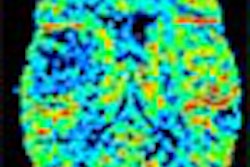SAN FRANCISCO - More than 850,000 angioplasties will be performed in the U.S. this year; the vast majority of them involving stent placement. Unfortunately, more than 150,000 patients undergoing the procedure will develop recurrent symptoms due to in-stent restenosis.
The analysis of clinical outcomes from two arms of the Stents and Radiation Therapy Trials (START) should help cement the efficacy of strontium 90 (Sr-90) radiation in stemming restenosis, according to a presenter on Wednesday at the American Society for Therapeutic Radiology and Oncology (ASTRO) meeting.
"Multiple studies have been published that have supported the role of radiation in the management of [coronary artery disease], but as we’ve analyzed this data, the medical community has become aware of the mismatch that can occur between interventional injury length and radiation length, or so-called geographic miss. Concern has been raised that geographic miss may compromise the clinical outcome," said Dr. Mohan Suntharalingam, vice-chairman of the department of radiation oncology at the University of Maryland School of Medicine in Baltimore.
"The objective of the START 40 trial was to investigate the relationship between radiation source length and clinical outcome by comparing the placebo arm of the START trial to a similar cohort of patients who were treated with a 40-mm radiation source train," he added. Other authors involved in the study were based at Lenox Hill Hospital in New York City, Emory University in Atlanta, Brigham and Women’s Hospital in Boston, and the Montreal Heart Institute in Ontario, Canada.
The START 40 trial enrolled 207 patients from June 1999 to February 2000. Patients were eligible for both trials if they had a single lesion and in-stent restenosis within native vessels between 2.7 mm and 4 mm. Lesion length criteria was defined by the ability to treat the restenotic region with a 20-mm balloon.
The patients randomized to radiation in START were treated with a 30-mm 90-SR/Y-90 source train; those enrolled in START 40 received therapy with a 40-mm source train. The radiation therapy doses were 18.4 Gy for reference vessel diameters between 2.7 mm and 3.3 mm, and 23 Gy for vessels between 3.3 mm and 4 mm. Routine follow-up was done with angiography at 8 months.
"Quantitative coronary angiographic analysis was performed looking at four different vessel segment lengths," Suntharalingam said. "Stent segment was defined by the physical stent length, the injured segment on QCA as areas of balloon inflation. Radiation segment was defined by the physical source train length. The longest segment was defined with a 5-mm margin on either side of the physical source train."
In addition, an analysis was performed comparing the three groups in order to determine if treatment with a longer source train improved the rates of geographic miss and edge restenosis. The primary efficacy endpoint was an 8-month target vessel failure (TVF).
According to the results, the use of the 40-mm source train was associated with a lower incidence of geographic miss: 7% in START 40 vs. 34% START. However, "the radiation oncologists involved in this trial suggested that, upon meaningful clinical analysis, [we look at] the use of prescription dose length rather than the physical length of the source train. Sure enough, when we [examined] injured segment length versus prescription dose length, the geographic miss rate jumped to 46% in the START 40 trial. This resulted in a statistically significant difference in terms of restenosis, 32% [in START] versus 18% in [START 40]," Suntharalingam said.
Other results included a lower 8-month TVR for START 40 at 16%, compared to START at 24% and an 11% reduction in TVR overall. There were 237 patients treated with radiation therapy who had lesions greater than 15 mm in length. Again, there was a reduction in the TVR for START 40 to 14% (29% in START) in these patients. The restenosis rate was improved by 46%.
"In summary, START 40 continues to add to the growing body of literature that supports the role of radiation in the management of in-stent restenosis," Suntharalingam said. "There was a 26% reduction in major adverse cardiac events. There was a 44% reduction in binary restenosis within the analysis segment of the study."
The results of the geographic miss analysis using prescription dose length supports a multidisciplinary approach to the management of these patients, he added. "As radiation oncologists, I think we have to continue to pay attention to the sites of injury -- balloon inflation sites of injury -- as well as the placement of our source train and the prescription dose in order for us to continue to see the benefit of radiation," he said.
By Shalmali PalAuntMinnie.com staff writer
November 9, 2001
Related Reading
Radiation proves robust for preventing in-stent restenosis, September 10, 2001
Rate of edge restenosis unacceptably high after use of radioactive stents, May 9, 2001
Gamma radiation reduces in-stent restenosis rate in saphenous vein grafts, March 20, 2001
Radioactive stents appear to only postpone restenosis, January 10, 2001
Hypersensitivity to nickel or molybdenum may cause in-stent restenosis, December 1, 2000
Copyright © 2000 AuntMinnie.com



















